In more than half of the states of the US, we now have "Constitutional Carry," that is, the ability to carry a concealed weapon with no requirement for a permit of any kind. This is as it should be. In other states (as in my own) even if a permit is required for concealed carry, none is needed for open carry of a handgun. As upsetting as it may be to some people, it would be perfectly legal in this state to wear a gun on your hip in plain view, while shopping at Kroger's. So: would a gun using loose powder and ball, a "muzzle-loading" handgun, be suitable for personal protection?
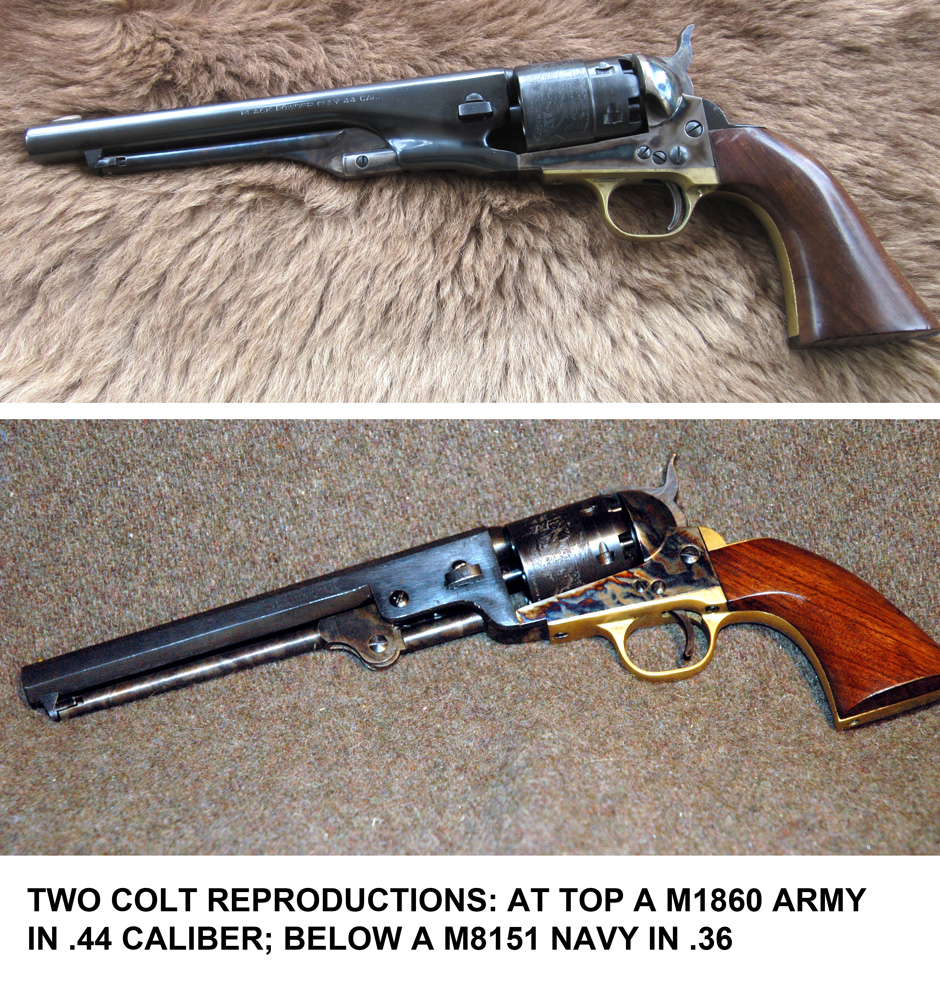 There are two broad categories of black powder handguns: pistols and revolvers. The former are usually single-shots, though some "two-shooters" are made. Revolvers usually hold six shots, though some have only five. Assuming that such a gun is intended to be used in the home, the revolver is a clear choice for most people (there are exceptions to this statement that I'll get to presently). In the home size of the gun is not a real issue. Even a fairly large gun can be kept handy in the house. Carrying, especially carrying it concealed, is another story.
There are two broad categories of black powder handguns: pistols and revolvers. The former are usually single-shots, though some "two-shooters" are made. Revolvers usually hold six shots, though some have only five. Assuming that such a gun is intended to be used in the home, the revolver is a clear choice for most people (there are exceptions to this statement that I'll get to presently). In the home size of the gun is not a real issue. Even a fairly large gun can be kept handy in the house. Carrying, especially carrying it concealed, is another story.
There's a tendency in modern-day shooting circles to look at paper energies and scoff at the ballistics of old style firearms. People tend to forget that virtually all replica BP handguns are copies of or derived from designs that were specifically created for self-defense use. Within their limitations they're as effective today as they were in the days of the "Wild West" or the Civil War: as 750,000 Americans discovered then, BP firearms are indeed deadly weapons.
There are really only two choices when it comes to caliber, in terms of effectiveness. Those are .44 and .36 caliber. The .31 caliber guns are pretty weak compared to these two—especially the .44—but have their role to play.
The .44 first: assuming that the choice is a fairly robust revolver (such as the Colt 1860 Army or the Remington 1858) even with a round ball a .44 would be effective at close range. A .44 caliber round ball weighs 138 grains. Driven at a modest 800 feet per second (FPS) that ball has an energy level of 197 foot-pounds (FP). Not a "magnum" in any sense but comparable to a .38 S&W, a caliber with which I think no sane person would want to be shot. True, sectional density (SD) of a .44 caliber round ball is low (0.13) but a conical bullet in this caliber could weigh as much as a .38 Special bullet, i.e., about 158 grains. Reducing the velocity to, say, 750 FPS (this is dependent on powder charge) the energy level is the same and the SD is marginally higher, translating to a little better penetration. If the velocity can be increased to 800 FPS using more energetic propellant, the energy figure goes up to 226 FP.
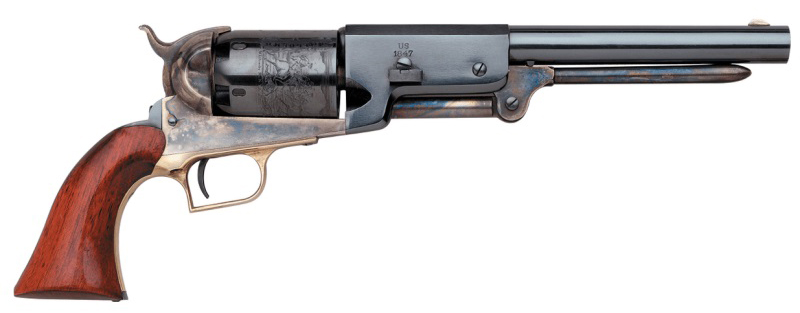
There's one percussion revolver that is unquestionably powerful enough: the Colt M1847 "Walker" in .44 caliber. This massive revolver (about 5 pounds, with a 9" barrel) was designed by Col. Sam Walker to address the shortcomings of Colt's "Paterson" guns he'd used in the Seminole Wars. Walker liked the Paterson concept but he wanted a pistol that would reliably stop a horse and/or its rider. The Walker was designed to do exactly that. In fact, until the 1930's it was the most powerful handgun ever made. A charge of 60 grains of black powder pushing a conical bullet at 1000-1300 FPS is nothing to sneeze at.
Only 1100 original Walkers were ever made: they're the "Holy Grail" of Colt collectors, by far too expensive to shoot; a real Walker can sell for as much as a nice 4-bedroom house. But very good, very affordable replicas are made in Italy. In fact they're better than the originals in terms of metallurgy and precision of manufacture, thanks to CNC technology.
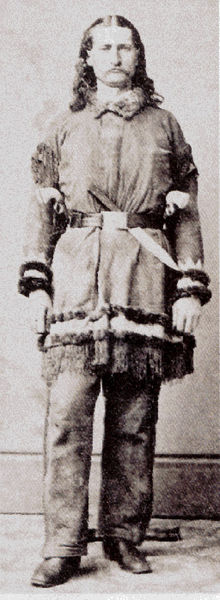 The .36 presents an interesting case. Its round balls weigh only 80 grains. At 800 FPS those bullets would have 114 FP of energy. That's less than a .380 ACP (generally regarded as only a marginally effective self-defense caliber). A conical bullet with more mass would have higher SD but lower velocity compared to a round ball. However, a 126 grain conical bullet is available; at 850 FPS, energy jumps to 194 FP and SD to a very respectable 0.12; if velocity can be pushed to 1000 FPS using more energetic powder (I'd be inclined to use Hodgdon 777) muzzle energy goes up to 267 FP. Not bad even by modern standards.
The .36 presents an interesting case. Its round balls weigh only 80 grains. At 800 FPS those bullets would have 114 FP of energy. That's less than a .380 ACP (generally regarded as only a marginally effective self-defense caliber). A conical bullet with more mass would have higher SD but lower velocity compared to a round ball. However, a 126 grain conical bullet is available; at 850 FPS, energy jumps to 194 FP and SD to a very respectable 0.12; if velocity can be pushed to 1000 FPS using more energetic powder (I'd be inclined to use Hodgdon 777) muzzle energy goes up to 267 FP. Not bad even by modern standards.
"Wild Bill" Hickock used a pair of Colt Navies in .36 with which he killed at least six men in the course of 10 years as a gunfighter. He was also a lawman and an Army scout: his career demonstrates the truth of the old saying that it's not the gun that's dangerous, it's the man behind it, assuming he knows what he's doing, as Hickock certainly did. Hickock's Navies had fairly long barrels (7-1/2") so might well have generated considerable velocity, especially with finer-grained powder.
What about the .31's? Back in the days of the California Gold Rush, one of Colt's best-selling products was the M1849 in .31 caliber: probably more M1849's were sold than any other Colt percussion revolver. These diminutive handguns were easy to hide, making them immensely popular as "hideout" and "backup" pistols. The .31's are more or less popguns, or as today's cant has it, "mouse guns." A .31 ball weighs only 50 grains, the same as the bullet loaded into the .25 ACP cartridge. At 800 FPS that tiny bullet has just 71 FP. Its SD is a measly 0.07. The .25 ACP, one of the most popular calibers ever invented, has even less power: just 65 FP. But the .25 ACP sold well for the same reason as the .31 revolvers: the guns using it are tiny and easily hidden. Neither is ideal for use as a house gun but as concealed weapons, both would work. (Full disclosure: I carried a .25 FN M1906 "Vest Pocket" pistol for years and never felt under-gunned.)
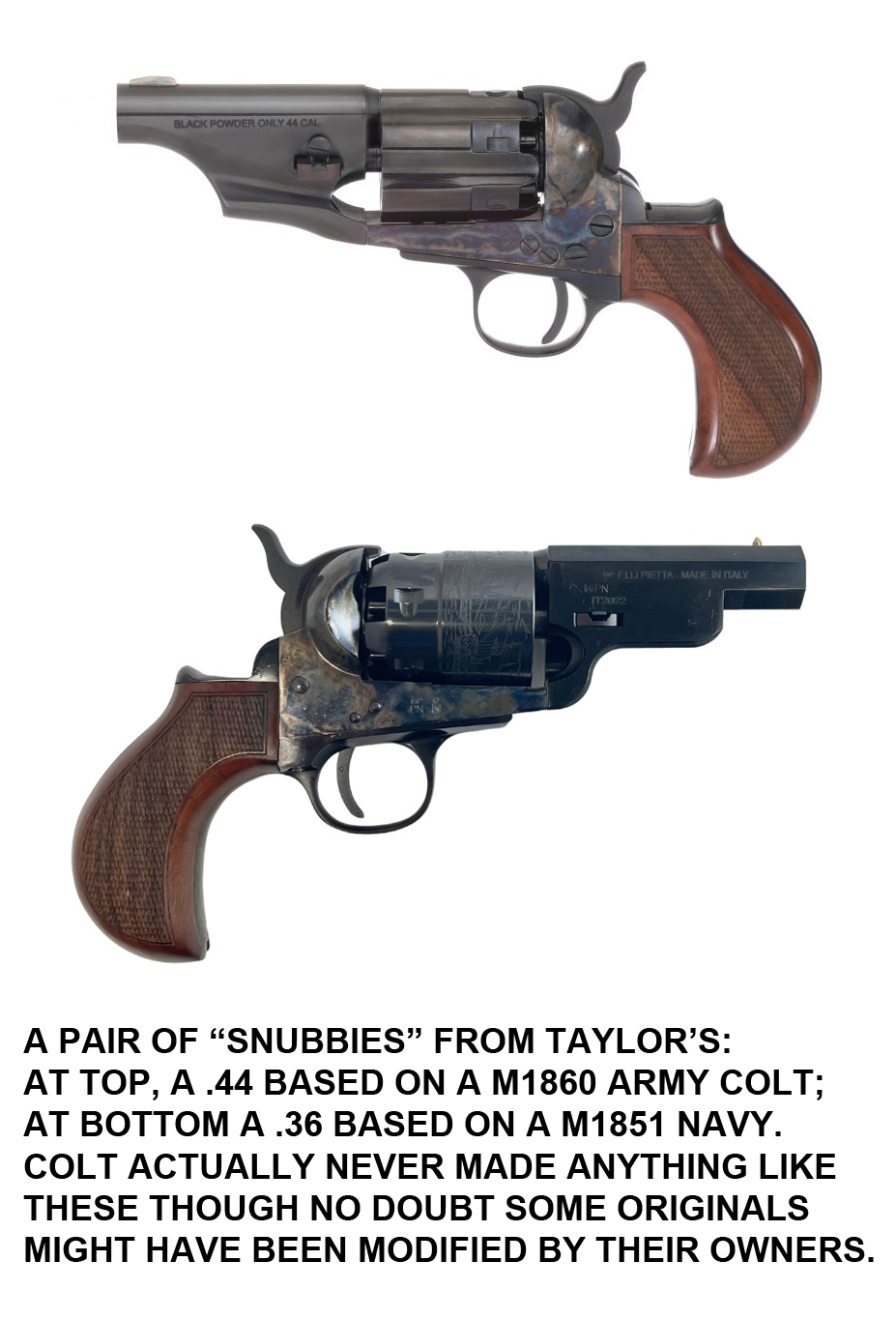 If the gun is to be carried concealed, there are options besides the .31's. Most muzzle-loading revolvers have pretty long barrels, on the order of 7-1/2" to 8" or so. They were never intended for concealed carry. But modern-made derivatives exist. Taylor's Firearms carries a number of interesting items, including "snub nose" revolvers in both .44 and .36 calibers.
If the gun is to be carried concealed, there are options besides the .31's. Most muzzle-loading revolvers have pretty long barrels, on the order of 7-1/2" to 8" or so. They were never intended for concealed carry. But modern-made derivatives exist. Taylor's Firearms carries a number of interesting items, including "snub nose" revolvers in both .44 and .36 calibers.
Getting back to the use of muzzle-loaders in the house, there are a couple that would undoubtedly be effective, though neither is a revolver: the short-barreled side-by-side shotguns sold by American Guncraft are also muzzle-loaders, though not replicas of any older design. They're modern (and legal) versions of the old Ithaca "Auto & Burglar Gun," sold until the National Firearms Act of 1933 put it into the same category as machine guns. The 12-gauge Guncraft products use shotgun primers for ignition. Loaded with buckshot, at close range they'd be a pretty terrifying thing for an intruder to face. Taylor's Firearms markets a "Howdah Pistol," a double-barreled 20 gauge side-by-side that's a replica of a gun often carried as "backup" by tiger hunters in 19th Century India. It uses percussion caps, not shotgun primers. If I were to use one of these I'd replace the nipples for #11 caps with those for "musket" caps, far larger and more reliable than the #11 size. Like the Guncraft product it would certainly be an effective weapon. The Howdah is also available with rifled barrels in .50 or .58 caliber, or one of these calibers paired with a shotgun barrel.
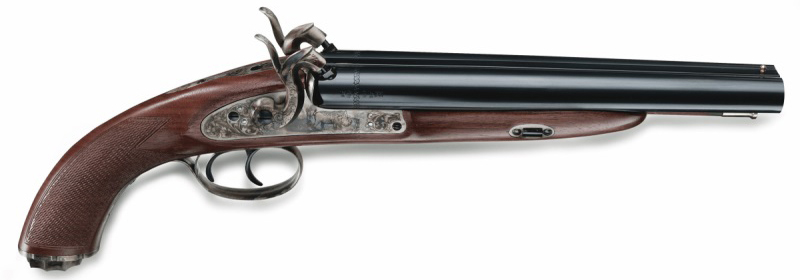
There are other considerations regarding the use of muzzle-loading guns for protection besides ballistics. Muzzle-loaders, whether used with traditional black powder or with most "replica" powders (such as Pyrodex or Hodgdon 777) make a lot of smoke and flash when fired. Smoke in closed spaces can be a real issue, obscuring visibility and making follow-up shots more difficult. The fireball from a charge of black powder can be quite impressive, possibly blinding both the shooter and the shootee. Sub-optimal, that.
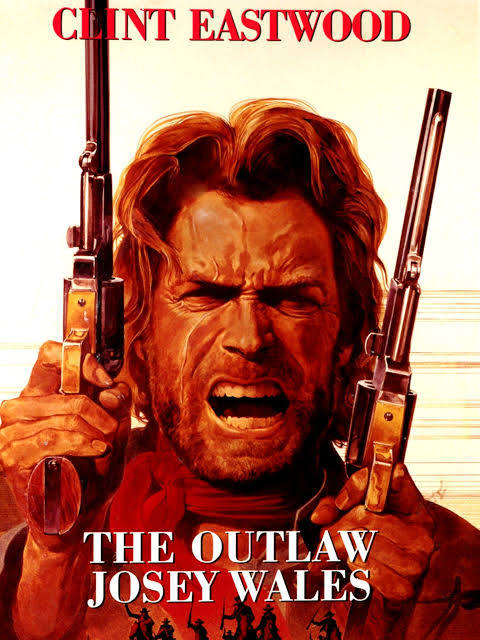 Then there is the matter of reliability. Percussion-fired weapons are not so reliable as guns using fixed ammunition. When Hollywood makes a movie with a hero using percussion revolvers (such as Clint Eastwood's iconic role as "Josie Wales") they're usually converted to use fixed ammunition: a misfire on a movie set can cost a lot of money in lost time. Misfires are far more common in a gun using percussion caps than with more modern ignition systems, especially those using shotgun primers, as do the stubby shotguns sold by American Guncraft.
Then there is the matter of reliability. Percussion-fired weapons are not so reliable as guns using fixed ammunition. When Hollywood makes a movie with a hero using percussion revolvers (such as Clint Eastwood's iconic role as "Josie Wales") they're usually converted to use fixed ammunition: a misfire on a movie set can cost a lot of money in lost time. Misfires are far more common in a gun using percussion caps than with more modern ignition systems, especially those using shotgun primers, as do the stubby shotguns sold by American Guncraft.
Unfortunately no percussion revolvers I know of use shotgun primers. It follows that anyone choosing to use a muzzle-loader for personal defense has to be absolutely certain all its quirks and idiosyncrasies are understood, that the shooter has found ways to overcome them, but even then to be prepared to accept that the gun may not go BANG! every time. A misfire in a confrontation with an assailant is something no one wants.
Last but not least, muzzle-loading guns are very slow to reload. It can easily take ten minutes to reload a six-shot percussion revolver. It's not an accident that after fixed ammunition became widely available, guns to use it came on the market, quickly replacing the older percussion-fired type.
So on the question of whether muzzle-loading guns are suited to self defense, the answer has to be a qualified "maybe." Anyone compelled by law or driven by choice to use one should think seriously about his needs and their drawbacks. They'll do the job, if need be; but there are better options.
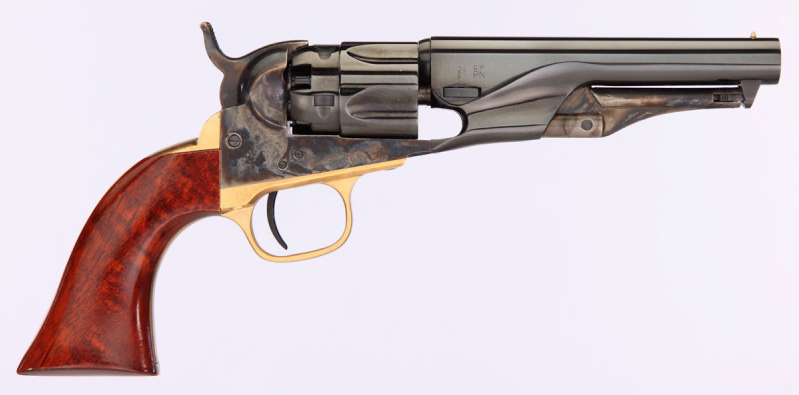
Nevertheless, if I were constrained to use a muzzle-loading handgun to protect myself, I'd go with a .36. It would be one specific .36: Uberti's beautiful replica of the Colt M1862 Police revolver, with a 4.5" barrel. This sleek and elegant five-shooter is one of my favorites; a perfectly balanced joy to shoot. A man could do worse. A lot worse.